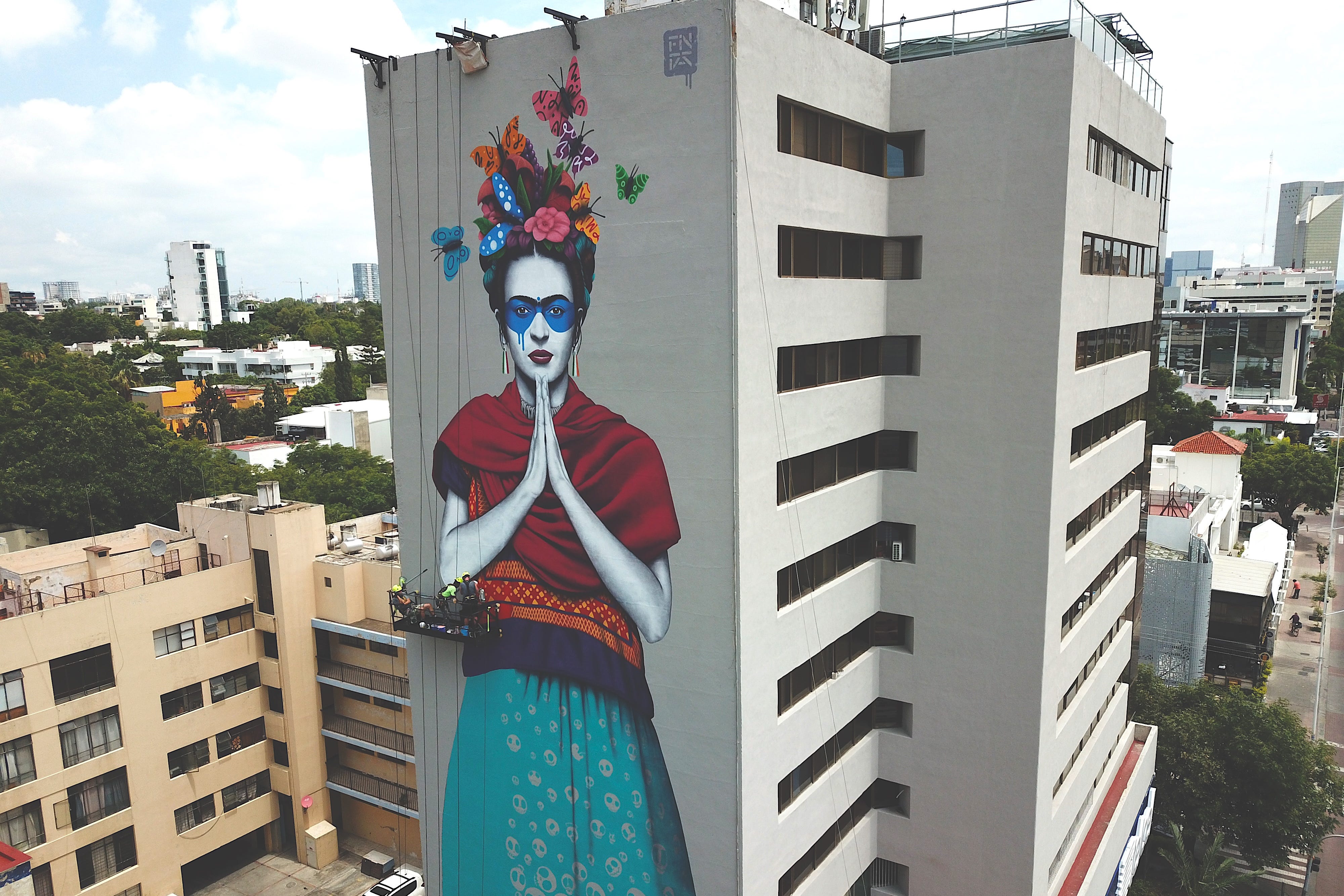Irish urban artist says artwork should be accessible to all ahead of new show
His approach, which he has dubbed ‘urban aesthetics’, breaks away from the political approach typically associated with street artists like Banksy.

Your support helps us to tell the story
From reproductive rights to climate change to Big Tech, The Independent is on the ground when the story is developing. Whether it's investigating the financials of Elon Musk's pro-Trump PAC or producing our latest documentary, 'The A Word', which shines a light on the American women fighting for reproductive rights, we know how important it is to parse out the facts from the messaging.
At such a critical moment in US history, we need reporters on the ground. Your donation allows us to keep sending journalists to speak to both sides of the story.
The Independent is trusted by Americans across the entire political spectrum. And unlike many other quality news outlets, we choose not to lock Americans out of our reporting and analysis with paywalls. We believe quality journalism should be available to everyone, paid for by those who can afford it.
Your support makes all the difference.Irish urban artist Fin DAC has said he does not feel artwork should be “inaccessible” or viewers made to feel like “fools for not understanding” the concept.
The Cork-born artist, known for his large scale murals which depict women with piercing stares in bold colours, is launching his first solo show in three years which will display a new series that blend his style with that of some of his favourite artists.
His approach, which he has dubbed “urban aesthetics”, breaks away from the political approach typically associated with street artists like the elusive Banksy.
The artist told the PA news agency he did not see any reason to compete with Banksy’s popular satirical work and instead wanted to created something “completely different”.
“I made a definite decision in my early days to not make my work political at all”, he said.
“I have a terminology for my art, which is called urban aesthetics and that’s based on a group of creatives from the late 19th to early 20th century and they had a motto that art should only concern itself with beautification and not socio or political commentary.
“And because my work was different to a lot of the street artists that were around at the time, the Banksy style was very, very popular. Not just because of Banksy. There were lots of other artists who were doing very, very similar work…
“I wanted to make mine something completely different.”
The artist sees his approach of “beautifying the urban landscape” as an “important” pursuit for all outdoor areas.
“I don’t think that art and artwork should be inaccessible to anybody or I don’t think anybody should be made to feel like they’re fools for not understanding what they’re looking at,” he said.
“I do think that I have a very simplistic approach to what I do. I paint portraiture. Portraiture is something that’s come down through the annals of art history.
“You don’t have to know anything about art or even representation to understand what you’re looking at with my work.”
His work also places women, typically of Asian heritage, at the forefront and looking back at the viewer as he wanted to challenge the “male gaze” aesthetic that was common at the time he started out as an artist.
“I felt it was too easy to draw women in a sexualised way and also too popular and too prominent,” he said.
“And definitely, I think I pre-empted all the stuff that’s going on now with feminism (art). I don’t want to speak for women but I did want the depictions to be slightly more well-rounded.”
His new show HomEage, which will be held at the St Martins Lane Crypt Gallery in London from Friday, pays tribute to famed artists – including Andy Warhol, Pablo Picasso and Vincent Van Gogh – by merging their individual styles with his usual depiction of Eurasian women.
Starting the project in 2020 while in lockdown in California, he turned to artists who he had grown up with to connect with his home roots.
He said: “They are my artworks. I’m just recreating the second half of the artwork in the style of somebody else.
“And that, to me, is a kind of a metaphor of just dressing women up in a different way. I’m taking a style or colours or line types that are associated with a different artist, and I’m literally just putting them over the top of my own depictions.
“They don’t look that different from my depictions, they’re not meant to, so it is just a way of representing the female form in another way, but actually still having it almost exactly the same, like the foundation is still the same. It’s just the makeup that’s applied that’s slightly different.”
Fin DAC’s new pop-up exhibition HomEage, curated by West Contemporary Editions, will open at the St Martins Lane Crypt Gallery in London on October 25 and a limited-edition collector’s box set trilogy will be available.